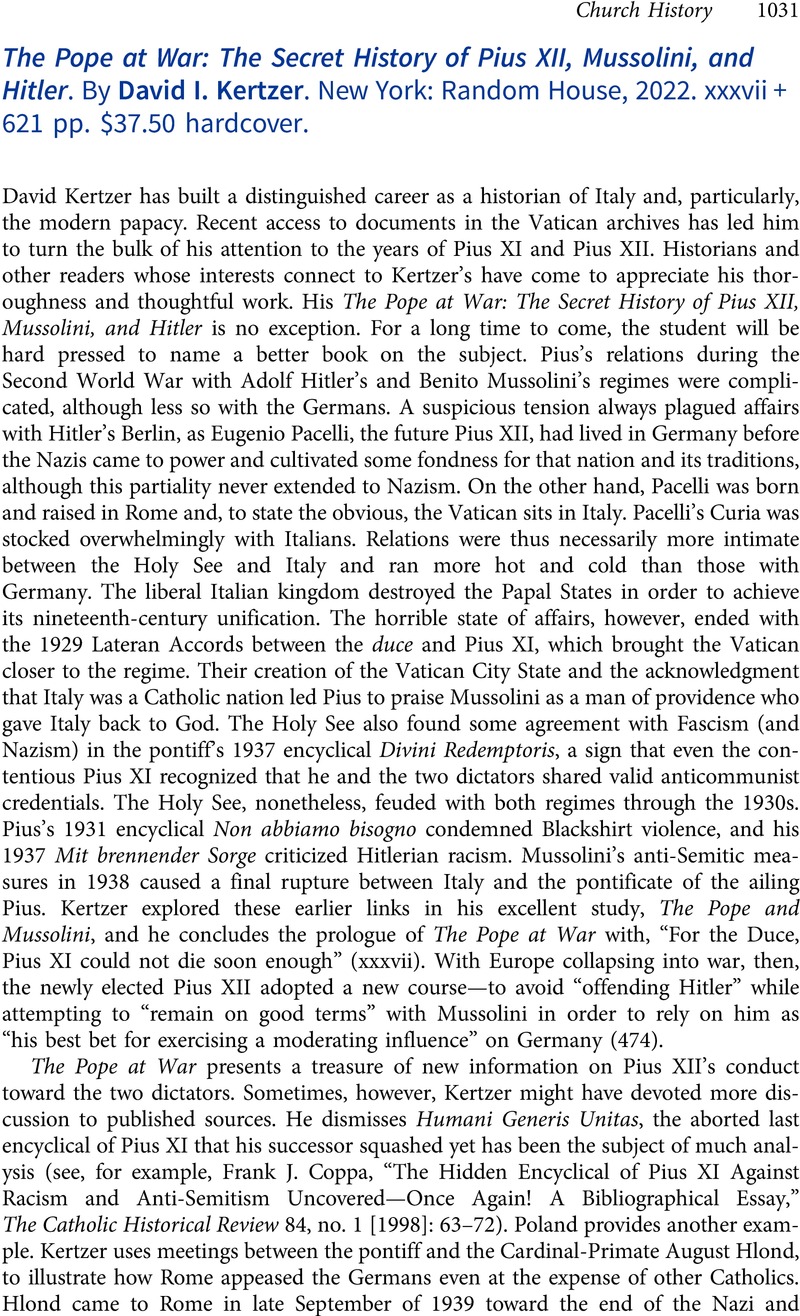No CrossRef data available.
Article contents
The Pope at War: The Secret History of Pius XII, Mussolini, and Hitler. By David I. Kertzer. New York: Random House, 2022. xxxvii + 621 pp. $37.50 hardcover.
Review products
The Pope at War: The Secret History of Pius XII, Mussolini, and Hitler. By David I. Kertzer. New York: Random House, 2022. xxxvii + 621 pp. $37.50 hardcover.
Published online by Cambridge University Press: 19 March 2024
Abstract
An abstract is not available for this content so a preview has been provided. Please use the Get access link above for information on how to access this content.

- Type
- Book Reviews and Notes
- Information
- Copyright
- Copyright © The Author(s), 2024. Published by Cambridge University Press on behalf of American Society of Church History


